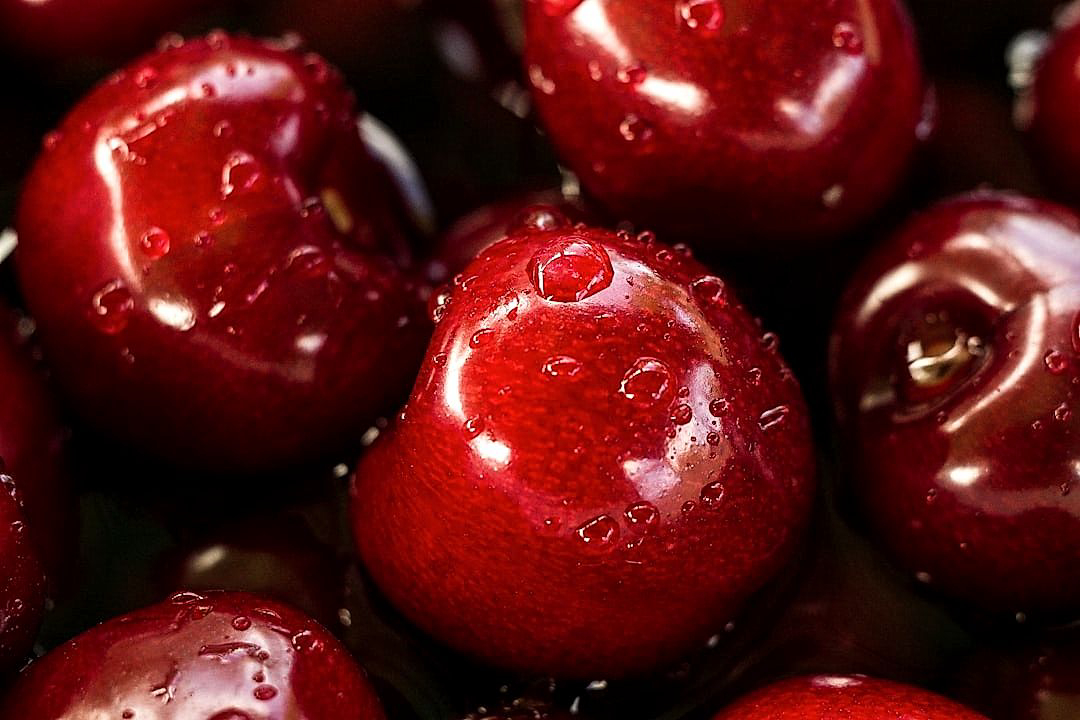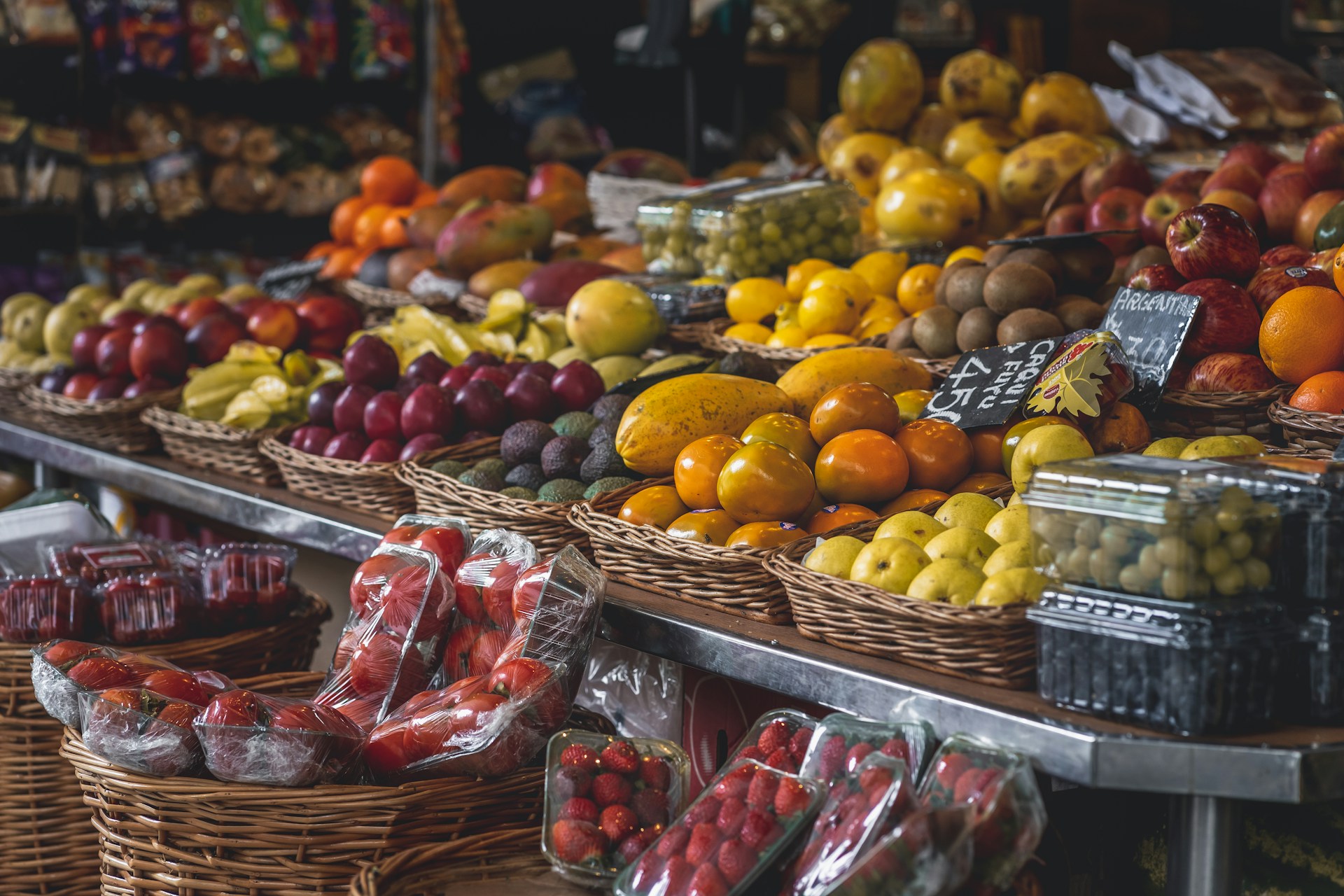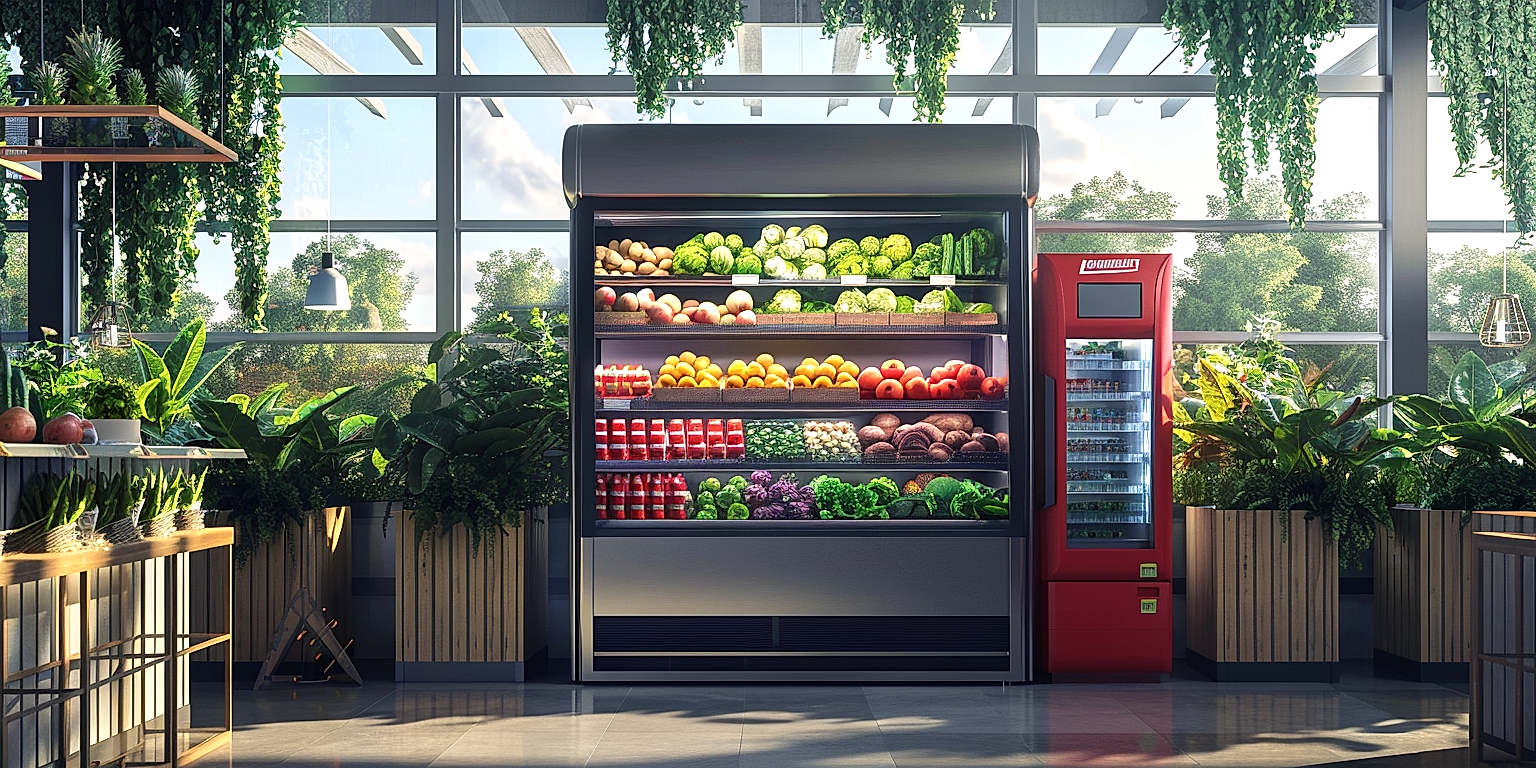Awareness and action regarding food safety should be a priority for everyone involved in the supply chain, from growers to consumers.
Handling and storing fresh produce correctly is vital in minimising contamination risks and preventing foodborne illnesses.
This blog post focuses on practical, straightforward measures everyone can take to ensure the safety and quality of these food items.
With health concerns rising globally, this topic is more relevant than ever.
The discussions in this post will equip both industry experts and everyday consumers with essential knowledge.
Let’s delve into these important, yet often overlooked, procedures.
Contents
- Safety Measures For Handling Fresh Produce
- 1. Wash hands before touching fresh produce.
- 2. Use clean utensils and cutting boards.
- 3. Discard Bruised or Damaged Fruits and Vegetables
- 4. Separate produce from raw meat or poultry
- 5. Thoroughly rinse produce under running water
- 6. Dry Produce with a Clean Cloth/Paper Towel
- 7. Refrigerate cut, peeled or cooked produce promptly.
- The Bottom Line
Safety Measures For Handling Fresh Produce
1. Wash hands before touching fresh produce.
The first and foremost rule in handling fresh produce is washing your hands thoroughly.
It is not an exaggeration to say that your hands can be a breeding ground for bacteria that can contaminate your food.
Hand hygiene is paramount to food safety and it starts with proper hand washing.
Thoroughly washing your hands with soap and warm water before handling food is a fundamental practice.
When washing your hands, ensure to scrub all parts of your hand, including under your fingernails, for at least 20 seconds.
Using antibacterial soap can be a bonus, but any kind of soap will do.
If you don’t have access to soap and running water, hand sanitizer with at least 60% alcohol can be used as a substitute.
However, hand sanitizers should never replace traditional hand washing when it comes to food preparation.
It is also crucial to dry your hands properly after washing, as wet hands can breed bacteria.
Always use a clean towel or a disposable paper towel to dry your hands as reusing a dirty towel might recontaminate your hands.
Remember, hand hygiene should be practiced not just before starting food prep, but also in between tasks.
For instance, if you handle raw meat and then plan to slice vegetables, washing your hands in between can prevent cross-contamination.
Hand hygiene also extends to wearing gloves when necessary.
When wearing gloves, change them regularly, and always put on a fresh pair after handling raw meat or poultry and before touching produce.
Regardless if you’re a food handler in a professional setting or just cooking at home, proper hand hygiene can go a long way in ensuring the safety of the fresh produce you handle.
Following these hand washing guidelines can help minimize the risk of foodborne illnesses and ensure you’re handling your fresh produce safely.
2. Use clean utensils and cutting boards.
Maintaining cleanliness in your kitchen equipment is a fundamental aspect of handling fresh produce safely.
Avoiding cross-contamination starts with proper sanitation, which involves both clean utensils and cutting boards.
In using a cutting board, it is important to clean it thoroughly after each use, particularly after cutting raw meat or poultry.
Certain materials, like hard plastic, glass, marble, and composite, are best for cutting boards due to their nonporous nature preventing bacteria hideouts.
Dedicate specific cutting boards for fresh produce alone as a way of reducing the risk of cross-contamination from other food sources.
After washing your cutting boards, ensure that they’re dried efficiently after cleaning as dampness can encourage bacteria growth.
Use hot, soapy water, or consider using a solution of 1 tablespoon of unscented, liquid chlorine bleach in 1 gallon of water to sanitize your cutting boards and then thoroughly rinse and dry. Safer produce handling is achieved with cleaner utensils.
Utensils such as knives, peelers, and graters that come into contact with fresh produce should also be under the same strict cleaning and sanitation protocols.
It’s noteworthy to ensure that your utensils don’t have food residues and are not rusty to prevent foodborne diseases.
Have a separate set of utensils for raw and cooked foods if possible – this minimizes the risk of food cross-contamination.
Every time you use your utensils, whether for stirring, serving or cooking, make sure to clean them before and after using them to prevent spreading bacteria to your fresh produce.
Food safety extends far beyond washing your produce thoroughly – It’s about creating an environment where bacteria and other pathogens struggle to survive.
To maintain an environment that promotes food safety, always soak your clean utensils in boiling water, pay attention to their storage, and replace them as often as needed to ensure that they do not harbor bacteria that can contaminate your fresh produce.
Without doubt, investment in good kitchen hygiene practices, which includes using clean utensils and cutting boards, pay off in terms of better health and prevention of foodborne diseases.
3. Discard Bruised or Damaged Fruits and Vegetables
The importance of discarding bruised or damaged fruits and vegetables within a grocery store or even in our homes can’t be overstated.
These foods are not only less appetizing and can ruin the flavor of meals, but they also pose a significant risk for foodborne diseases.
When fruits and vegetables are bruised or damaged, it creates an optimal environment for bacteria to breed and multiply.
This is largely due to the fact that the protective skin is damaged, leaving the softer and often nutrient-rich insides exposed.
Typically, this environment combined with the humidity and warmth from the air creates a breeding ground for harmful bacteria such as E.coli and salmonella.
Another important factor to consider is the potential for cross-contamination. Bacteria can easily transfer from the damaged produce to other foods or surfaces.
For instance, if you use the same cutting board for damaged fruits and uncooked meat, the chances of contamination are incredibly high.
Fruits and vegetables that show signs of decaying should not only be discarded but also kept separate from other produce to prevent the spread of bacteria.
For households or businesses with composting practices, it’s crucial to know that vegetables or fruits that have begun to spoil should not be included. Decaying produce in a compost bin can contribute to the spread of bacteria, attracting pests and creating sanitary issues.
It’s also important to note that even if the majority of produce appears healthy, if a portion is bruised or damaged, it’s best to cut off and discard that section.
Additionally, when purchasing fresh produce, make it a habit to check for signs of bruising or damage and avoid those items.
It’s better to be safe and invest in fresh, undamaged fruits and vegetables than to risk exposing yourself or others to potential foodborne diseases.
So while it may seem harmless, or perhaps even wasteful, to discard bruised and damaged fruits and vegetables, this enforces a better practice of safety measures when handling fresh produce. Remember, your health comes first.
By practicing this, you’re severely cutting down the chances of contracting a foodborne illness and maintaining the quality and flavor of your meals.
4. Separate produce from raw meat or poultry
When it comes to fresh produce, it’s crucial to maintain a clear separation between it and any raw meats or poultry.
This is because raw meat and poultry often carry harmful bacteria, such as Salmonella and E. coli, that can contaminate fruits and vegetables.
Keeping raw meat and poultry separate from fresh produce is an essential step towards ensuring food safety and preventing foodborne illness.
Not only should they be stored separately, but they should also be handled with separate utensils and cut on different cutting boards.
This helps prevent cross-contamination, which is the transfer of harmful bacteria from one food (particularly raw foods) to another.
Even the slightest contact between fresh produce and raw meat or poultry can lead to the unwanted transfer of bacteria, turning your fresh ingredients into potential sources of foodborne illness.
It’s also worth noting that this guidance applies not just to preparation but also to storage.
Fresh produce should never be stored close to raw meat or poultry in the refrigerator or freezer.
Always ensure that raw meat and poultry are stored in sealed containers at the bottom of the fridge to eliminate the risk of any meat juices dripping onto the produce.
Also, it is advised to clean refrigerator shelves regularly to remove any bacteria that may have been transferred from raw meat or poultry.
When shopping, avoid placing raw meat or poultry in the same bag as your fresh produce.
By maintaining a dedicated cutting board for fresh produce and one for meat or poultry, and by washing each board thoroughly after every use, you can effectively minimise the risk of cross-contamination.
Finally, always remember that no matter how convenient it might seem at the time, it’s never safe to compromise on food safety practices, especially when dealing with raw meats and fresh produce.
All these precautions may seem tedious, but they are small steps that make a significant difference in ensuring the safety and healthiness of your meals.
5. Thoroughly rinse produce under running water
Washing produce under running water is a crucial step in ensuring the safety of the fresh foods we consume.
It stands as a significant barrier to foodborne illnesses.
The importance of this activity in the prevention of cross-contamination cannot be overemphasized.
The very act of washing fresh produce appears simple, yet it profoundly reduces the risk of ingesting harmful bacteria and other microorganisms.
When executing this washing process, it is important to use water that is considered potable, or safe for drinking.
Running water is preferred over a still water bath as it aids in the more effective removal of dirt and potential contaminants.
Degree of pressure from the running water can also help to remove airborne pollutants that may have settled on the produce’s surface.
It’s essential to make sure the water is not too powerful, as this could damage the produce.
When washing fruits or vegetables with thick skin, it could be beneficial to use a clean brush to scrub the surface gently.
On the other hand, more delicate items need a gentle hand wash in running water.
Water temperature should be paid attention to during this process; cold water is generally more effective for washing fresh produce.
No detergents or soaps should be used in washing produce; they can absorb the soap residues leading to health complications when consumed.
Even after purchasing pre-packaged items labeled ‘pre-washed’ or ‘ready-to-eat,’ it wouldn’t hurt give them a quick rinse.
While washing cannot guarantee the complete elimination of all bacteria, it will significantly reduce their numbers and lower the risk of foodborne illnesses.
Investing ample time for the washing of produce help us to recognize any bruised or rotten parts, these sections should be discarded.
In the end, the time taken to thoroughly rinse our produce under running water is a small investment for the health and safety benefits it offers.
6. Dry Produce with a Clean Cloth/Paper Towel
One of the most important steps in handling fresh produce safely is to dry it properly after washing.
While rinsing your produce under running water removes much of the dirt and potential contaminants, drying is equally crucial in the cleaning process.
When you dry your fresh produce, you reduce the likelihood of bacteria growth, which thrives in moist environments.
The most hygienic method of drying your fruits and vegetables is to use a clean cloth or paper towel.
Ensuring the cloth or paper towel is clean is critical to prevent cross-contamination, which can occur when a dirty cloth or towel is used to dry the produce.
It is essential to thoroughly dry all parts of the produce, including any crevices or indents, as these areas can often harbour bacteria.
For items like grapes, cherry tomatoes, or berries, consider spreading them out on a clean towel and gently patting them dry.
For larger items such as peppers, cucumbers, or apples, simply rub the surface gently with a clean cloth or paper towel to dry them thoroughly.
Drying your produce also helps to preserve and intensify the flavour and texture of your fruits and vegetables.
After drying, it’s best to consume your fresh produce quickly, or refrigerate it immediately to keep it at its freshest.
When storing your dried produce, make sure you place it in clean and sanitized containers to ensure safety.
It’s also beneficial to clean the refrigerator regularly to maintain a hygienic environment for your produce.
If you have a large amount of produce, consider investing in a salad spinner, which can effectively dry your produce quickly and efficiently.
Handling fresh produce can be a delicate process, but by taking the time to properly dry your fruits and vegetables, you can ensure their safety and enhance their quality.
Drying produce properly is a safety measure that often gets overlooked, but it is truly vital in food safety and handling.
7. Refrigerate cut, peeled or cooked produce promptly.
Maintaining the freshness of produce is crucial not only for the sake of taste but also for the health and safety of those consuming it.
This includes cut, peeled, or cooked produce which often requires prompt refrigeration after preparation or purchase.
Leaving these types of produce out in room temperature for extended periods can lead to the growth of harmful bacteria, potentially causing illness if consumed.
It’s also important to remember that the temperature of your refrigerator should be set to 40°F (4°C) or below, as higher temperatures can also encourage bacterial growth.
The exact duration for which cut, peeled or cooked produce can be safely stored in the refrigerator can vary, but general recommendations suggest no more than three to four days.
Therefore, it might be beneficial to only prepare or peel the amount of produce you plan on eating within this time frame to minimize waste and ensure safety.
In truth, proper refrigeration is the key pillar of keeping produce safe to consume after it’s been prepared.
For produce that has already been cooked, rapid cooling is often recommended before refrigeration.
This means allowing the cooked produce to reach room temperature relatively quickly, rather than leaving it to slowly cool on the counter which provides an optimal environment for bacteria to multiply.
It’s advisable to use shallow containers to store cut, peeled, or cooked produce to facilitate rapid cooling and even refrigeration.
Generously applying cling wrap or sealing with airtight lids also wards off contamination from other items in the fridge or potential exposure to bacteria in the air.
When reheating refrigerated cooked produce, be sure to heat it until it reaches a temperature of 165°F (74°C), which is hot enough to kill most bacteria.
Implementing these safety measures can prevent a number of health problems that can potentially arise from consuming produce that hasn’t been properly stored.
While such practices may require a bit of effort and attention to detail, they are ultimately necessary to ensure the safety of the produce consumed by you and your family.
So next time you prepare a meal or snack with vegetables and fruits, remember to promptly refrigerate the cut, peeled, or cooked produce and enjoy the peace of mind that comes with knowing your food is not only delicious, but safe as well. </p
The Bottom Line
Following a meticulous hygiene protocol is crucial when handling and preparing fresh produce to prevent cross-contamination and proliferation of harmful pathogens.
Washing hands, using clean utensils, discarding damaged produce, and ensuring separation from raw meat and poultry are important steps in maintaining the safety of your food.
Rinsing and properly drying the produce are also essential, as well as immediate refrigeration of prepared fruits and vegetables.
Implementing these procedures assures healthier, safer consumption for you and your family.




